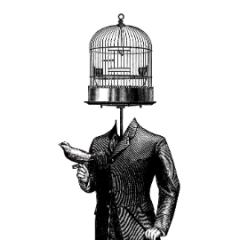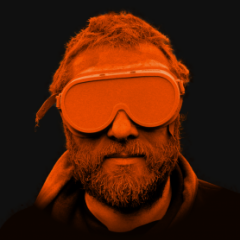Leaderboard
Popular Content
Showing content with the highest reputation on 04/06/2022 in all areas
-
Forget AI images like these that look like quick Corel Painter concept art or quick PS compositions with DoF covered backgrounds : Today the San Francisco-based lab announced DALL-E’s successor, DALL-E 2. It produces much better images, is easier to use, and—unlike the original version—will be released to the public (eventually). DALL-E 2 may even stretch current definitions of artificial intelligence, forcing us to examine that concept and decide what it really means. "Teddy bears mixing sparkling chemicals as mad scientists, steampunk" / "A macro 35mm film photography of a large family of mice wearing hats cozy by the fireplace" Image-generation models like DALL-E have come a long way in just a few years. In 2020, AI2 showed off a neural network that could generate images from prompts such as “Three people play video games on a couch.” The results were distorted and blurry, but just about recognizable. Last year, Chinese tech giant Baidu improved on the original DALL-E’s image quality with a model called ERNIE-ViLG. DALL-E 2 takes the approach even further. Its creations can be stunning: ask it to generate images of astronauts on horses, teddy-bear scientists, or sea otters in the style of Vermeer, and it does so with near photorealism. The examples that OpenAI has made available (see below), as well as those I saw in a demo the company gave me last week, will have been cherry-picked. Even so, the quality is often remarkable. "One way you can think about this neural network is transcendent beauty as a service,” says Ilya Sutskever, cofounder and chief scientist at OpenAI. “Every now and then it generates something that just makes me gasp." Diffusion models are trained on images that have been completely distorted with random pixels. They learn to convert these images back into their original form. In DALL-E 2, there are no existing images. So the diffusion model takes the random pixels and, guided by CLIP, converts it into a brand new image, created from scratch, that matches the text prompt. The diffusion model allows DALL-E 2 to produce higher-resolution images more quickly than DALL-E. “That makes it vastly more practical and enjoyable to use,” says Aditya Ramesh at OpenAI. In the demo, Ramesh and his colleagues showed me pictures of a hedgehog using a calculator, a corgi and a panda playing chess, and a cat dressed as Napoleon holding a piece of cheese. I remark at the weird cast of subjects. “It’s easy to burn through a whole work day thinking up prompts,” he says. "A sea otter in the style of Girl with a Pearl Earring by Johannes Vermeer" / "An ibis in the wild, painted in the style of John Audubon" DALL-E 2 still slips up. For example, it can struggle with a prompt that asks it to combine two or more objects with two or more attributes, such as “A red cube on top of a blue cube.” OpenAI thinks this is because CLIP does not always connect attributes to objects correctly. As well as riffing off text prompts, DALL-E 2 can spin out variations of existing images. Ramesh plugs in a photo he took of some street art outside his apartment. The AI immediately starts generating alternate versions of the scene with different art on the wall. Each of these new images can be used to kick off their own sequence of variations. “This feedback loop could be really useful for designers,” says Ramesh. One early user, an artist called Holly Herndon, says she is using DALL-E 2 to create wall-sized compositions. “I can stitch together giant artworks piece by piece, like a patchwork tapestry, or narrative journey,” she says. “It feels like working in a new medium.” User beware DALL-E 2 looks much more like a polished product than the previous version. That wasn’t the aim, says Ramesh. But OpenAI does plan to release DALL-E 2 to the public after an initial rollout to a small group of trusted users, much like it did with GPT-3. (You can sign up for access here.) GPT-3 can produce toxic text. But OpenAI says it has used the feedback it got from users of GPT-3 to train a safer version, called InstructGPT. The company hopes to follow a similar path with DALL-E 2, which will also be shaped by user feedback. OpenAI will encourage initial users to break the AI, tricking it into generating offensive or harmful images. As it works through these problems, OpenAI will begin to make DALL-E 2 available to a wider group of people. OpenAI is also releasing a user policy for DALL-E, which forbids asking the AI to generate offensive images—no violence or pornography—and no political images. To prevent deep fakes, users will not be allowed to ask DALL-E to generate images of real people. "A bowl of soup that looks like a monster, knitted out of wool" / "A shibu inu dog wearing a beret and black turtleneck" As well as the user policy, OpenAI has removed certain types of image from DALL-E 2’s training data, including those showing graphic violence. OpenAI also says it will pay human moderators to review every image generated on its platform. “Our main aim here is to just get a lot of feedback for the system before we start sharing it more broadly,” says Prafulla Dhariwal at OpenAI. “I hope eventually it will be available, so that developers can build apps on top of it.” Creative intelligence Multiskilled AIs that can view the world and work with concepts across multiple modalities—like language and vision—are a step towards more general-purpose intelligence. DALL-E 2 is one of the best examples yet. But while Etzioni is impressed with the images that DALL-E 2 produces, he is cautious about what this means for the overall progress of AI. “This kind of improvement isn’t bringing us any closer to AGI,” he says. “We already know that AI is remarkably capable at solving narrow tasks using deep learning. But it is still humans who formulate these tasks and give deep learning its marching orders.” For Mark Riedl, an AI researcher at Georgia Tech in Atlanta, creativity is a good way to measure intelligence. Unlike the Turing test, which requires a machine to fool a human through conversation, Riedl’s Lovelace 2.0 test judges a machine’s intelligence according to how well it responds to requests to create something, such as “A picture of a penguin in a spacesuit on Mars.” DALL-E scores well on this test. But intelligence is a sliding scale. As we build better and better machines, our tests for intelligence need to adapt. Many chatbots are now very good at mimicking human conversation, passing the Turing test in a narrow sense. They are still mindless, however. But ideas about what we mean by “create” and “understand” change too, says Riedl. “These terms are ill-defined and subject to debate.” A bee understands the significance of yellow because it acts on that information, for example. “If we define understanding as human understanding, then AI systems are very far off,” says Riedl. “But I would also argue that these art-generation systems have some basic understanding that overlaps with human understanding,” he says. “They can put a tutu on a radish in the same place that a human would put one.” Like the bee, DALL-E 2 acts on information, producing images that meet human expectations. AIs like DALL-E push us to think about these questions and what we mean by these terms. OpenAI is clear about where it stands. “Our aim is to create general intelligence,” says Dhariwal. “Building models like DALL-E 2 that connect vision and language is a crucial step in our larger goal of teaching machines to perceive the world the way humans do, and eventually developing AGI.”1 point
-
1 point
-
I would also add to this good list of notes that the reflections in the metal have nothing to do with the roof surround. The tone of the roof tiles would tint and alter the look of the lower metal sides. Also check your perspective. Have you looked into shadow catchers at all or camera calibration? There are techniques for placing 3d objects into 2d images.1 point
-
The vertical perspective is also off enough to notice immediately. Typically caused by the camera having some tilt to it (lens pointed up or down). The buildings in the background all have parallel vertical lines/edges, so that is the perspective you should be matching to. You can add your background image to the viewport with a Background Object to help. There is also a Camera Calibrator tag that may help, but probably overkill for this backdrop. All you need to do really is make sure the vertical edges of your machine appear straight in camera. Edit: After considering it a bit, I think your camera actually has roll to it (rotated slightly left). If it was just tilt, the horizontal edges would still be straight, but they aren't, so it's roll, not tilt.1 point
-
Agree with the above comments, but even more specifically on your shadows... the area under the machine needs to be considerably darker than the cast shadow because it is not getting either direct or indirect sunlight.1 point
-
Before proposing solutions, could you maybe tell us some more details? Is it really the goal to animate this, or is it more about automating the modeling steps? And could you please update your profile? Especially the version of Cinema 4D would be interesting. If it is more about modeling in the latest version of C4D, I'd for example take Scene Nodes/Capsules into account. Much more suited than Xpresso, I'd say. Or one could think about doing it in Python. It really depends on the use case and available C4D version.1 point
-
Does it have to be a solution using Xpresso? If you just want to animate something like that, then use a Pose Morph. If needed you can drive the morph itself with Xpresso.1 point
-
Brilliant! Thanks. It’s pretty close to how I set up furniture shots, except for the HDR light source. And I haven’t played with highlight compression. I will have to give it a try : )1 point
-
An Unreal Engine section of the forum sounds like a great idea Igor.1 point
-
Poor old Tim Sweeney - he looks so very uncomfortable. A presenter he is not. Nor is the rather stilted and overly scripted presentation format helpful. It is quite noticeable in most speakers on this digital stage, even the ones who do a reasonable job presenting. When they switch to the interviews it gets much better, though - far less scripted. The content is really interesting though. It is obvious tech like this is going to replace off-line render engines for much CG work (and already this is happening/has happened). I think I am going to install this version next week and play around. It's been a while since I checked out Unreal 2/3 😉1 point
-
this was a very professional presentation. I think the community centric setup, the huge free offerings and the urge to use all the complex tech to give the user a easy to use interface to super easily archive the most common tasks... I really think that is the way to go. I think also the old school 3d Programms need tools that just take care of the most needed tasks. I mean how many skys, cities or streets need to be setup all the time, and how complicated is is to get for example a sky with animated clouds. It is like a mussician that always has to build his instrument before he can make music.1 point
-
As a new C4D user, that's probably one of the best things that could have happened to you. The 3D world has become considerably less imaginative over the years and now almost exclusively relies on modern renderers to achieve the exact same looks. You should have a lot of fun with 3D and S&T, especially as a Graphic Designer. Welcome!1 point
-
HI - thank you. I would just give away the scene, but there are material and lighting assets in there I'm not authorized to share, but here is a breakdown. The chair model is free on CGTrader.com The lighting HDR map is from https://www.pingo.nu/vfxtools and there are some free samples - I believe the one I used is part of the free samples, but downsized. Materials are straight from Polligon.com, though I add a color correction to the wood diffuse and usually dial in the reflection myself, but minimal tweaking. Just using a standard Shadow Catcher material to create a seamless background. I'm using a LUT inside of Corona, but no prost production. I played with camera settings ISO: 1600 and F-Stop at F-16.1 point
-
Of the two, I would suspect AE of causing the problem more than c4d.1 point
-
I'm sure the OP has moved on, but some people may be looking for the answer to this. You can retime the cache in XP. Here's how to do it – however, you don't have to use Xpresso, you can use a Time Track, it's easier if you're used to After Effects time remapping. Hope that helps someone coming here looking for an answer 🙂1 point







